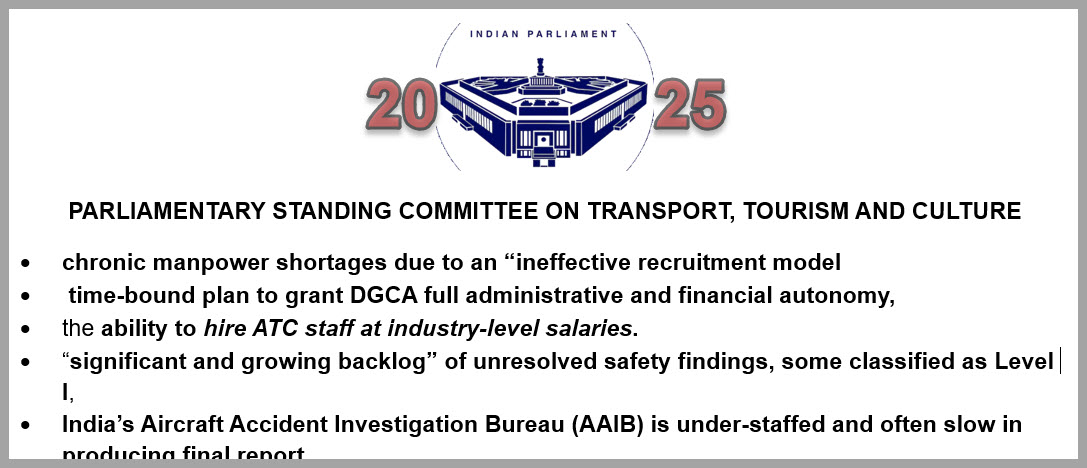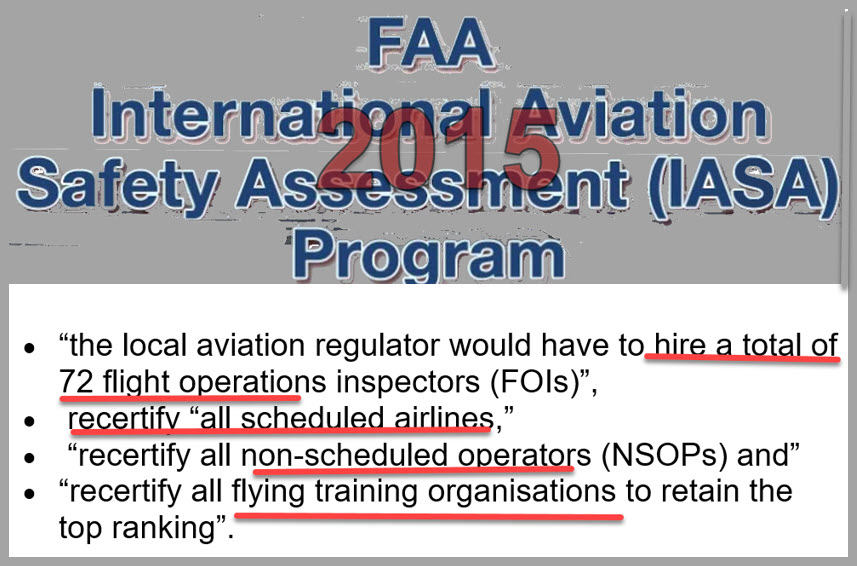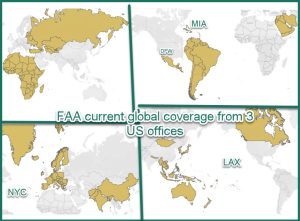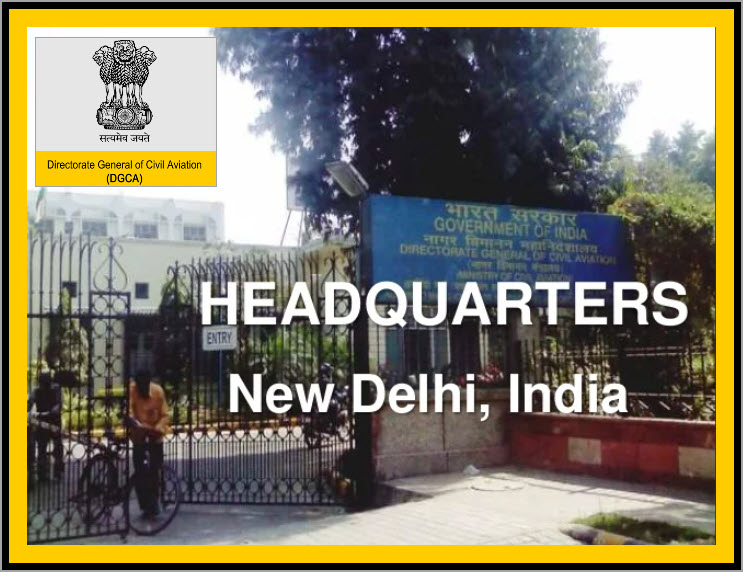INDIA’s aviation safety rating- 2015-2025 PRC’s power penumbra???

A recent report revealed India’s the PARLIAMENTARY STANDING COMMITTEE ON TRANSPORT, TOURISM AND CULTURE has raised red flags over systemic weaknesses in India’s civil aviation safety framework.
Five of the Committee’s findings greatly resemble the 2025 FAA INTERNATIONAL AVIATION SAFETY ASSESSMENT, delivered then by Secretary Foxx in New Delhi. UNIQUELY, the Grant of Category 1 STATUS was accompanied by 4 CONDITIONS. THEREIN RESIDES THE 2025-2015 COMPARISON-
This mystery deepens in that the FAA assessed India’s Directorate General of Civil Aviation in April 2023[1] and concluded that the country’s aviation safety organization merited a Category 1 status—the highest safety rating under the program.
The Parliamentary group charged with legislative oversight found many of the 2025 flaws!!! Does that mean that NOTHING HAPPENED IN 10 YEARS???
This quote from an article, inferred in 2015, that the Upgrade may have reflected broader international policy considerations:
What may be the reasons for continuing this elevated status even though it appears that the DGCA does not meet international standards?
Here is a summary of the analyses of the International Center for Sustainability, Congress.gov and US State Department’s’ Integrated Country Strategy :
“India holds profound strategic importance to the United States across multiple dimensions—economic, geopolitical, technological, and democratic
- Counterbalance to China: India’s geographic position and growing military capabilities make it a vital partner in countering China’s assertiveness in the Indo-Pacific region.
- Strategic Autonomy: India’s “multi-alignment” approach allows it to engage with diverse global powers while maintaining independence, making it a flexible and influential partner.
- Fast-Growing Economy: India is one of the world’s fastest-growing major economies and recently surpassed the UK to become the fifth-largest globally.
- Demographic Advantage: With a young, tech-savvy, English-speaking workforce, India offers long-term economic and innovation potential, especially as China’s population ages.
- Supply Chain Resilience: S. interests in diversifying supply chains away from China have made India a key alternative hub for manufacturing and technology.
- Major Defense Partner: Since 2016, India has been designated a “major defense partner,” enabling deeper collaboration on military technology and intelligence sharing.
- Democracy Promotion: As the world’s largest democracy, India shares core values with the U.S. and contributes to global democratic norms and institutions.
IASA was formally established in 1992, following a tragic crash involving Aerolíneas Argentinas that raised serious concerns about foreign airline safety oversight. Congress mandated this auditing of peer CAAs by the FAA in Federal Aviation Administration Authorization Act of 1992. While the statute was intended to establish a preventive safety measure, not a punitive one, some the sovereigns being audited by another sovereign have found the process undiplomatic. Further, if international goals are also involved, why not defer to ICAO’s USOAP. Those reviews use the same standards and many serve as a predicate to ICAO remedial support.
To be clear there is NO PROOF of any US global interests trumping the safety judgment. The funds spent on sending auditors around the world could be allocated to having professional FAA diplomats increase their PRESENCE with these other sovereigns?
A parliamentary panel has warned of systemic weaknesses in India’s aviation safety framework, flagging concerns over DGCA autonomy, air traffic controller fatigue, safety backlogs, accident probes, and pilot fatigue.
A new report by the PARLIAMENTARY STANDING COMMITTEE ON TRANSPORT, TOURISM AND CULTURE has raised red flags over systemic weaknesses in India’s civil aviation safety framework. The report, presented in Parliament on Wednesday, identifies multiple areas requiring urgent reforms, from regulatory autonomy to air traffic controller fatigue.
A MAJOR CONCERN was cited over DGCA autonomy and STAFFING SHORTAGES. The committee warned that the Directorate General of Civil Aviation (DGCA) suffers from chronic manpower shortages due to an “ineffective recruitment model.” It recommended a time-bound plan to grant DGCA full administrative and financial autonomy, including the ability to hire staff at industry-level salaries. Without this, the regulator will struggle to keep pace with rapid fleet and passenger growth.
Air Traffic Controller Fatigue
A critical concern was fatigue among Air Traffic Controllers (ATCOs), who manage the congested airspace. The panel called for a national Fatigue Risk Management System (FRMS) for ATCOs and a staffing audit to prevent the long-standing practice of seeking exemptions from duty time limits. Although 1,636 new ATCO posts have been sanctioned, the report warned that the mismatch between recruitment and training capacity continues to pose a direct risk to safety.
Backlog of Safety Deficiencies
The committee noted a “significant and growing backlog” of unresolved safety findings, some classified as Level I, which pose an immediate risk to flight safety. It urged the government to enforce time-bound closure of safety deficiencies and impose financial penalties on airlines and aviation establishments for non-compliance to strengthen enforcement credibility.
Accident Investigation Delays
The panel expressed concern that India’s Aircraft Accident Investigation Bureau (AAIB) is under-staffed and often slow in producing final reports. Delays not only prolong closure for victims’ families but also slow down the implementation of corrective measures.
Pilot Fatigue and FDTL Norms
Echoing recent debates in the industry, the committee highlighted rising pilot fatigue and called for stricter monitoring of Flight Duty Time Limitations (FDTL). It stressed that fatigue is cumulative and cannot be addressed merely by staying within technical limits.
Emergency Preparedness at Airports
The report flagged gaps in fire safety, rescue, and medical preparedness at several tier-2 and tier-3 airports. It recommended urgent upgrades to ensure India’s expanding regional aviation network does not compromise on basic safety standards.
Surveillance of Foreign MROs and Airlines
With a large portion of aircraft maintenance still carried out overseas, the committee urged tighter surveillance of foreign MRO (Maintenance, Repair and Overhaul) facilities. It also flagged the need to enhance oversight of foreign airlines operating in India to ensure a level playing field and consistent safety standards.
Training and Simulator Capacity
The committee noted that India’s training ecosystem, including simulators for pilots and ATCOs, is not keeping pace with demand. This gap, if not addressed, could further exacerbate safety risks in the future.
THE PANEL HAS URGED THE MINISTRY OF CIVIL AVIATION TO TREAT SAFETY AS “NON-NEGOTIABLE” AND ACT ON THE RECOMMENDATIONS WITHOUT DELAY.
Aviation safety upgrade: DGCA asked to meet 4 pre-conditions
Wednesday, April 22, 2015The US Federal Aviation Administration (FAA) may have restored category I status to India’s aviation safety oversight mechanism but the upgrade has been accorded based on DGCA’s promise TO MEET FOUR STRINGENT CONDITIONS IN UP TO A YEAR’S TIME. THE FAA MAY COME FOR AN AUDIT AGAIN IN 12 MONTHS TO ASSESS THE DEVELOPMENT.
Sources in the Directorate General of Civil Aviation (DGCA) informed the FAA has specified the local aviation regulator would have to hire a total of 72 flight operations inspectors (FOIs), recertify all scheduled airlines, non-scheduled operators (NSOPs) and flying training organisations to retain the top ranking.
A senior official in the DGCA told The Indian Express, “We are required to re-certify or issue fresh air operator’s permit (AOP) to all scheduled as well as non-scheduled operators, flying training organisations to ensure full compliance with international norms. The entire process would take about a year’s time.” The FAA may choose to conduct a fresh audit of the aviation safety oversight mechanism again at the time.
The DGCA had recertified the two airlines — Air India and Jet Airways — operating to the US, ahead of a FAA audit in December last year; recertification process has now started for IndiGo, SpiceJet, GoAir and Air Costa. “This process of issue of fresh AOPs to scheduled operators will take up to four months,” added the official. Newer ventures AirAsia India, Vistara and Air Costa have already been issued their AOP as per new norms laid down under CAP 3100 certification process.
2015 -Sec. Foxx announces India to
Category 1
UNIQUELY WITH 4 CONDITIONS
With great fanfare, Secretary Foxx announced that the DGCA of India had been upgraded to Category 1 (meets ICAO standards) after a long FAA International Aviation Safety Assessment review. Soon thereafter, it has been reported that the FAA’s “approval” was conditioned by four points with which the DGCA must comply (see below) sometime in the undefined future.
Why did the FAA take this extraordinary (unique?) step to increase the rating now, but pose the “threat” of a later reverter to Category 2 if the foreign government does not presently meet four found deficiencies?
India is the second most populous country in the world (1.2 billion) and it is seventh-largest by nominal GDP and third-largest by purchasing power parity. Its economy is growing dynamically. The President of the United States recently visited this country for its national holiday. The President of Airbus also made a visit and announced to India’s Prime Minister Modi that the multi-national manufacturer would devote $2 billion to his “Make in India” program.
What are the four conditions? As reported, they are:
- “the local aviation regulator would have to hire a total of 72 flight operations inspectors (FOIs)”,
- recertify “all scheduled airlines,”
- “recertify all non-scheduled operators (NSOPs) and”
- “recertify all flying training organisations to retain the top ranking”.
Those are not inconsequential regulatory actions and before they are completed, these signify that the FAA has concerns about the competence of all of those airlines and organizations. The lack of adequate staffing certainly strongly suggests that the past safety inspections have not been adequate; the DGCA Directorate listing shows about 50 individuals with the title Senior Flight Operation Inspectors or Flight Operation Inspectors. The requirement that the FOI roster should be increased by 125% is not a vote of confidence.
Seven countries are listed as Category 2 under IASA. Their airlines and economies suffer by that designation. However, one of the purposes of IASA is to protect US and international passengers from substandard safety standards. The announcement that India’s DGCA meets that standard becomes somewhat questionable by the establishment of four important steps with which the DGCA must comply. Should a passenger be 1000% confidant when flying on one of the carriers which have yet to be recertified?
[1] India’s ICAO USOAP Status (2025 Snapshot)-Effective Implementation (EI) Score: 85.65%:
Global Ranking 48th place, up from 102nd in previous years. This rating places India among the top 50 nations globally for aviation safety oversight.






